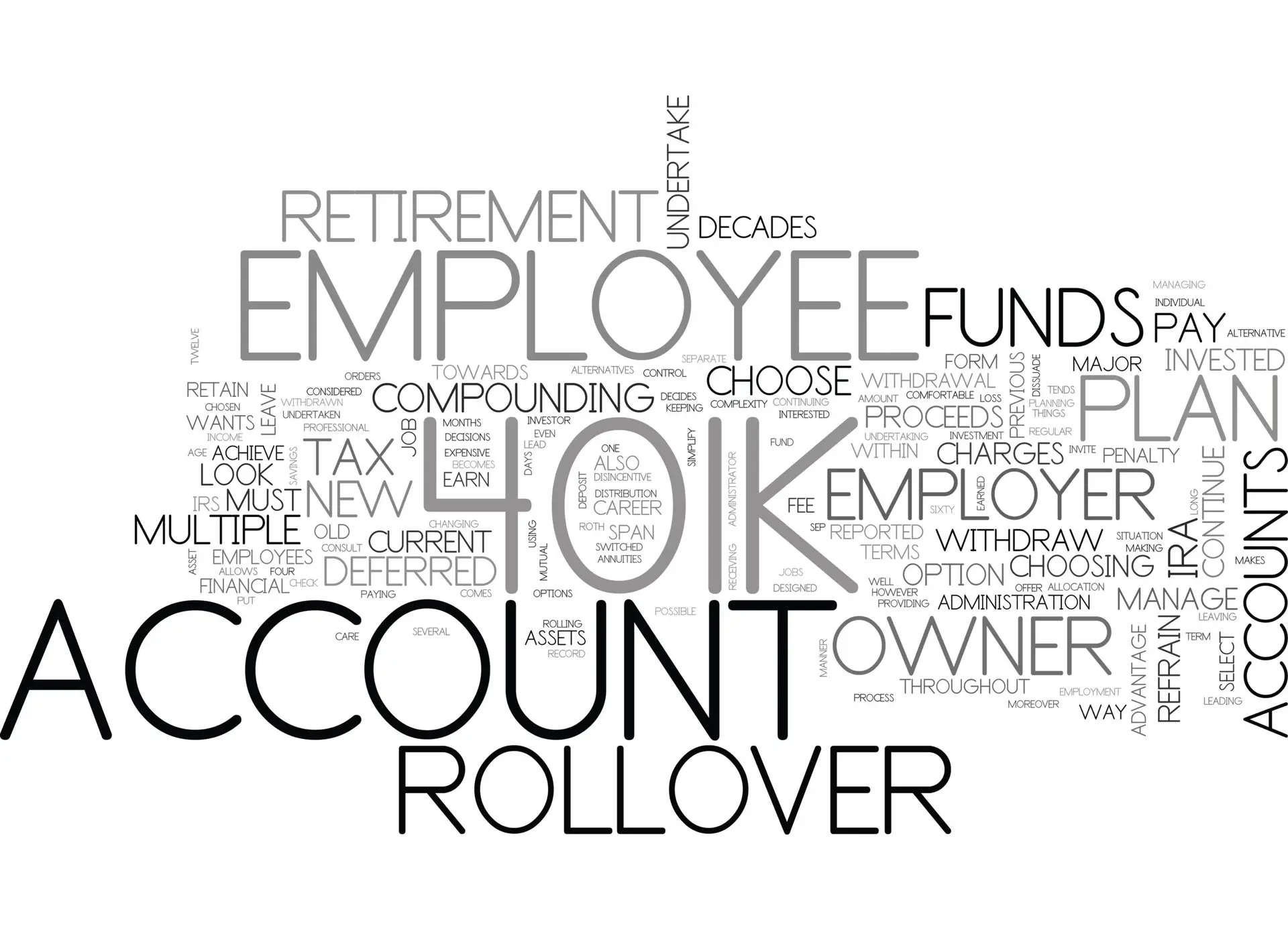Posted by PrimeTrust Advisors | July 22, 2024
What to do with an Old 401(k)?

Exploring Your Options
If you have money sitting in an old retirement account or are just starting a new job, it may be time to take a fresh look at your options for what to do with your retirement funds. One big advantage of a 401(k) plan is the portability of your account and the number of options you have for managing your retirement funds going forward.
In this article, we’ll briefly explore your options and highlight the pros and cons of these choices to help you determine the right move for you.
Option 1 – Leave the money in your old 401(k) plan
This is obviously the easiest option because you do not have to do anything—your money remains invested. However, this may not be your best option. Your account is still subject to the old plan’s terms and fees. What’s more, if you have a small balance (less than $7,000), they may force you out of the plan with an automatic distribution to a third-party IRA provider of their choosing that carries its own expense structure.
Pros:
- It’s easy; you do not have to do anything.
- Existing 401(k) loan features may NOT be available in your new 401(k), and definitely NOT in IRAs.
- 401(k) accounts are protected against creditors’ claims
Cons:
- You have access to fewer investment options than are typically available with IRA accounts.
- You must keep track of your old 401(k) account.
- Fees could be higher than an IRA account or another 401(k) plan that you could roll into.
Option 2 – Transfer your old 401(k) balance to your new employer’s plan
If you are eligible for your new employer’s 401(k) plan, initiating a direct plan-to-plan rollover into the new plan could be a good option for you, provided your new employer’s plan permits rollovers. It’s fairly easy to do; just contact the customer service representatives from your old plan and request a “direct rollover” to the new plan. They will walk you through the process. This option makes sense when you like the investment menu and cost structure of the new plan. Fees in the new plan are likely to be higher or lower than your old plan, so it’s important to check that out.
Pros:
- It’s fairly easy; most of the work is done for you after you contact customer service.
- 401(k) accounts are protected against creditors’ claims.
- The new plan may have more attractive features and investment opportunities.
- The convenience of having all your 401(k) money in one place.
Cons:
- You have access to fewer investment options than are typically available with IRA accounts.
- Fees may be more than your old plan or an IRA account that you could rollover to.
Option 3 – Roll over your 401(k) to an IRA
If funds are available to you from your 401(k) because you either changed jobs, quit work, retired, or reached age 59 ½, you might have the option to transfer money directly (tax-free) to an IRA account. Again, it’s fairly easy to do; just contact the customer service representatives from your old plan and request a “direct rollover” to your IRA account. First, make sure that you have opened an IRA account (or have an account already opened) that you can reference to the customer service representative. You will want to instruct them to initiate a “direct rollover” to that IRA account.
A word of caution is necessary here: Do NOT let an “advisor” talk you into purchasing a so-called variable annuity with your IRA proceeds. We have seen this all too often. If you want to know more, just do a Google search with the question – “Is a variable annuity a smart investment for my IRA?”
Pros:
- It’s relatively easy to do; most of the work is done for you after you contact customer service.
- You will have access to a much broader selection of investment options.
- You can “park” all your retirement accounts in one place.
Cons:
- You cannot borrow from an IRA like with your 401(k).
- IRA accounts are NOT protected against creditors’ claims.
- Because there are so many investment options available, you may need the assistance of an advisor to help you. Make absolutely sure the advisor is a fiduciary (in writing) before following any advice.
- Fees could be higher than your 401(k) plan if you also must pay an investment advisor.
Conclusion
Deciding what to do with an old 401(k) is a crucial step in managing your retirement savings. Each option has its own set of advantages and disadvantages, and the right choice depends on your specific financial situation, goals, and preferences. Whether you choose to leave your money in the old plan, roll it over to a new employer’s plan, or move it to an IRA, careful consideration and perhaps professional advice can help ensure your retirement funds are working optimally for your future.
This article is provided for informational purposes only. It is always best to counsel with your financial advisor or your tax professional to ensure that you make the best decision for your circumstances.
We’re Here to Help
If you have questions or want to explore this further, you can schedule a call with us using the calendar.
Or… you can do it the old fashion way by calling us directly at (864) 552-4020. We would welcome your call.
